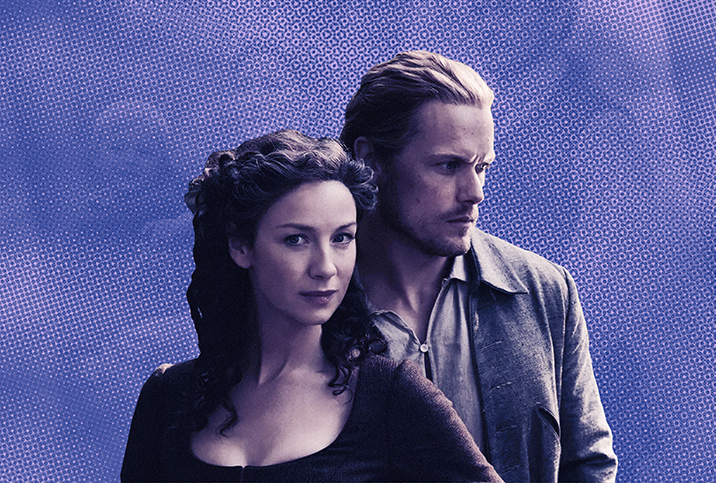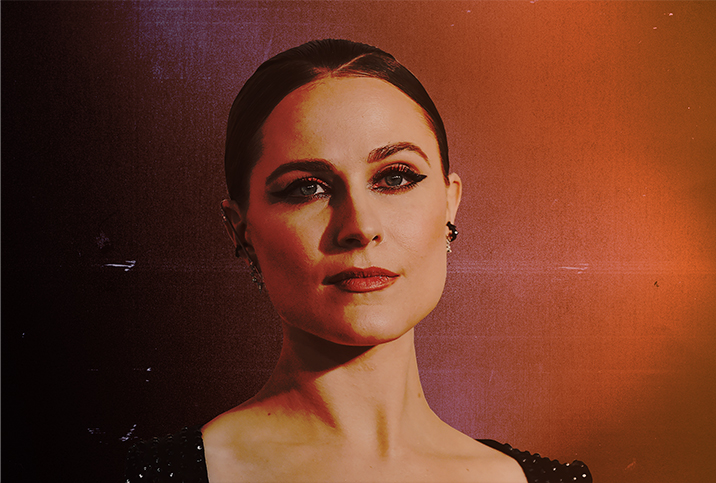'Outlander' Revisits the TV Approach to Sexual Assault

There has been no shortage of sexual assault depicted in Starz's hit series "Outlander." Based on Diana Gabaldon's novels of the same name, the show relates the story of Claire, a 20th-century nurse who time-travels back to 18th-century Scotland, where she meets the love of her life, Highlander Jamie Fraser.
Throughout the course of the show, Claire and Jamie encounter many hurdles, including multiple violent incidents. From the deeply traumatic rape of Jamie by his nemesis to the equally haunting sexual assault of their daughter, Brianna, the Frasers are all too familiar with sexual violence.
Up until the latest season, it seemed like there was always too much going on in "Outlander" for the show to really take the time to explore what sexual assault trauma really meant for victims. While there were brief narrative arcs focused on Jamie's and Brianna's assaults, others (young Ian's and Fergus' experiences, for instance) were hardly fleshed out at all. But following the group rape perpetrated on Claire, showrunners finally reckoned with the necessity to dig deeper into what happens to a survivor following trauma.
Going beyond the assault
Media representation of sexual assault frequently focuses on the immediate aftermath of the trauma and not often enough on the healing journey that follows.
"A lot of times the experiences of survivors are simplified for TV shows and movies," said Laura Palumbo, communications director at the National Sexual Violence Resource Center in Harrisburg, Pennsylvania. "It's often treated as a one-time event and not really taken into the context of the overall impact that would have on an individual."
Palumbo noted the majority of sexual assault survivors experience post-traumatic stress disorder (PTSD) as well as a variety of emotional, psychological and physical impacts. To her, representing this onscreen helps audiences understand the event's significance and what the experience is like, and underlines the resilience of survivors of sexual assault.
"When it is often treated as a one-time event, a lot of the focus is put on the vulnerability of the survivor and the devastation of the immediate aftermath," Palumbo explained. "But what we know is that survivors continue to go on with their day-to-day lives. Some days, their trauma is going to have a very direct impact on their daily experiences and choices, and on other days, life will feel 'normal.'
"It can be very validating for survivors to see portrayals that are more reflective of what their experiences have been," she continued. "And it can also help people in the general public understand and be more empathetic and supportive of survivors of sexual assault."
Exploring the healing process
Focusing the entire story arc for Claire on how she deals with her trauma felt inevitable for the creative team behind "Outlander." During the season 6 world premiere of the show, executive producer Maril Davis said the attack experienced by Claire at the end of season 5 was too traumatic to be ignored.
"We wanted to pay respect to people going through these traumas and say, 'You're not alone,'" she said.
Set on the eve of the American Revolution, the sixth season of "Outlander" follows the Frasers as they face new challenges and navigate the unrest caused by the upcoming war. In the midst of it all, Claire struggles to heal from what she experienced. While she appears to be getting on with day-to-day existence, viewers discover Claire uses her medical knowledge to keep the feelings and memories associated with her trauma at bay. In scenes when she's on her own, we see her using ether to plunge herself into a dreamless slumber.
"Claire is someone who finds it very difficult to ask for help," said Caitríona Balfe, the Irish actor who plays Claire, at the premiere. "She is really trying to tell everyone that she is OK, but we can see that it's not the case. She is unraveling and not willing to admit that to herself."
While she appears to be getting on with day-to-day existence, viewers discover Claire uses her medical knowledge to keep the feelings and memories associated with her trauma at bay.
For Palumbo, it was important for audiences to "see and understand that you can be very close to someone and not know the extent to which they are struggling because they are working so hard to hide their shame and their trauma." On the show, Claire lets her loved ones believe she's fine, because acknowledging what she is doing by using ether is, in her mind, admitting she has not recovered from her experience.
If media representation of sexual violence often emphasizes trauma over healing, "Outlander" wanted to make it clear that healing takes time. By the end of season 6, Claire still isn't over what happened to her and she may never be. For a show that didn't take the time to explore what trauma entailed in earlier seasons, this season's scripts finally focused on what it takes to begin moving forward. This is a path less traveled by entertainment media portrayal of sexual assault in the past.
Treating sexual violence as a plot device
One of the most infamous rape scenes in recent TV history was the assault experienced by Sansa Stark in season 5 of "Game of Thrones," which sparked a backlash from viewers fed up with the amount of sexual violence depicted on the show. As if wanting to put the plot device behind it, the series never really dug into the weight of the trauma it put its characters through or used those feelings in future plotlines.
The show's writers often argued the medieval times depicted in the series warranted the amount of sexual violence portrayed on screen. However, while a similar argument could be made with regard to "Outlander," as the current season is set in 1773, the show's writers have attempted to take a much more responsible and empathetic route.
For Palumbo, the way sexual assault has been normalized in media as a narrative tool allows the public to understand its prevalence. However, overlooking the emotions and responses that follow could hinder understanding of what the healing process often looks like and its complexity. A part of why healing is difficult and painful for survivors is because they are not exposed to accurate representations of healing journeys, according to Palumbo.
"Healing is not linear, and it is very normal to have good days and bad days, and everything in between," she said.
It is common for survivors to struggle with coping mechanisms that may not be particularly healthy for them overall, and showing this onscreen—as "Outlander" has done throughout season 6—can help reduce the stigma survivors of sexual assault may face.
The strength of the latest installment of "Outlander" lies in its willingness to devote one of its major plotlines for the entire season to showing Claire's healing process. Despite the potentially harmful way in which she uses ether to numb her pain, the portrayal of Claire's PTSD stands out because it is so often overlooked on TV and in movies. By giving Claire time to progress on her healing journey, "Outlander" is attempting to allow survivors of sexual assault to feel seen via TV.
For further information, visit the National Sexual Violence Resource Center at www.nsvrc.org and explore more ways to learn, get help and boost sexual violence prevention. The Rape, Abuse & Incest National Network (RAINN) organizes the free and confidential National Sexual Assault Hotline, a 24/7 service at 1-800-656-4673. RAINN also has an online hotline where you can speak one on one with a trained support specialist.

















